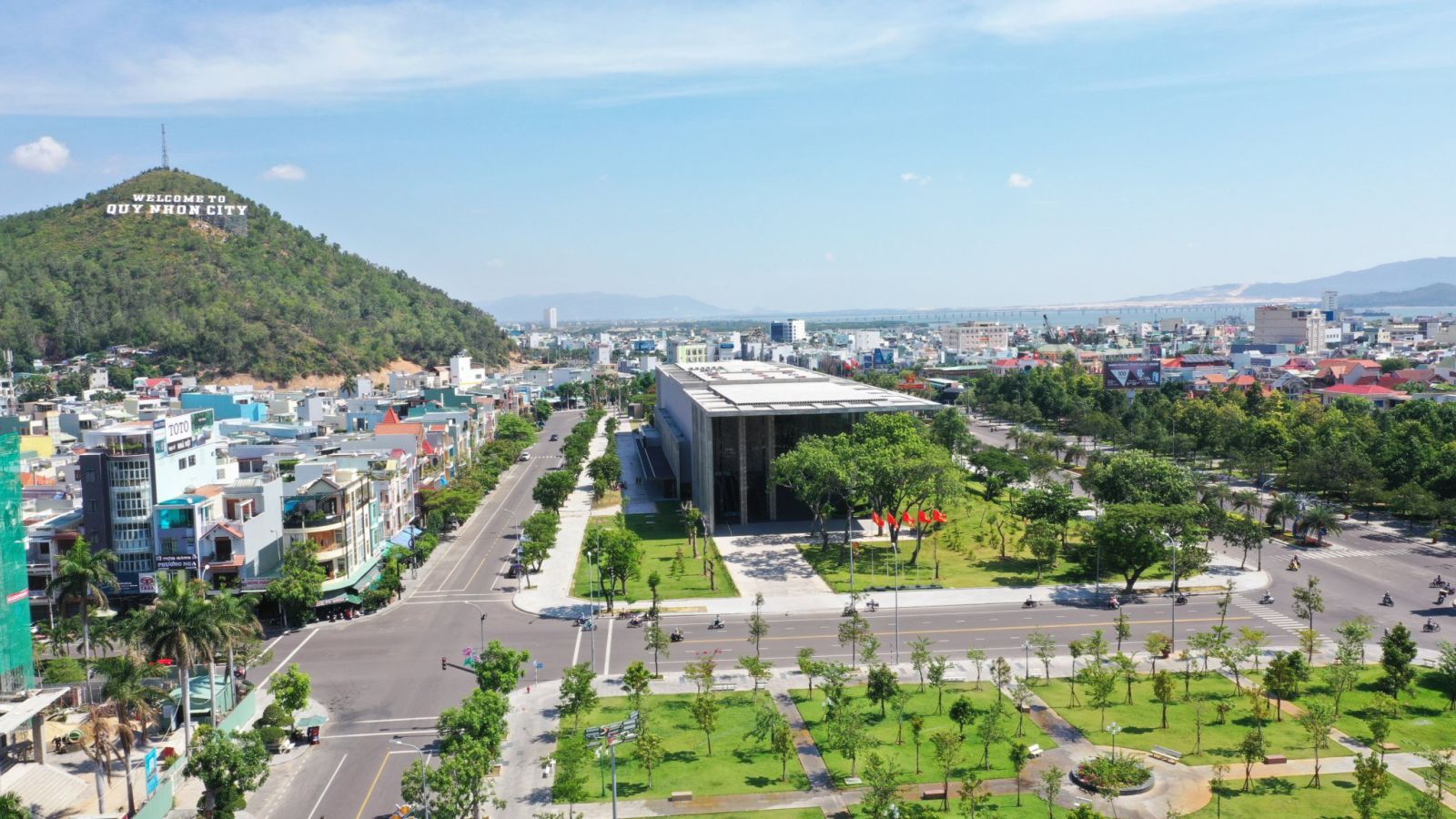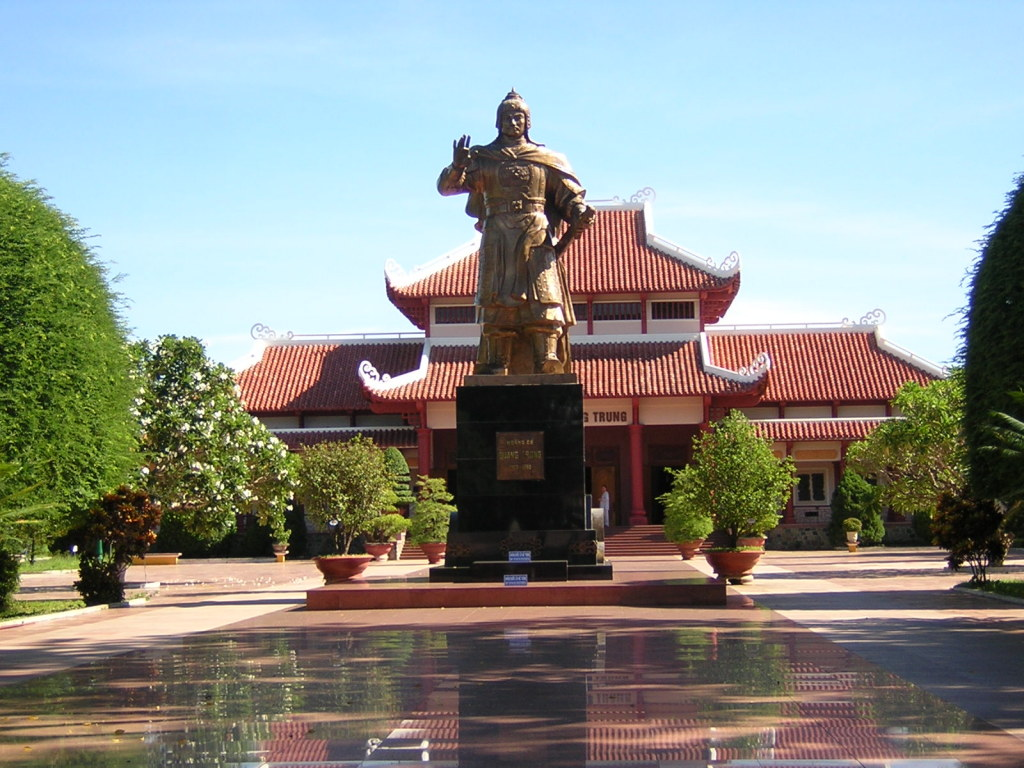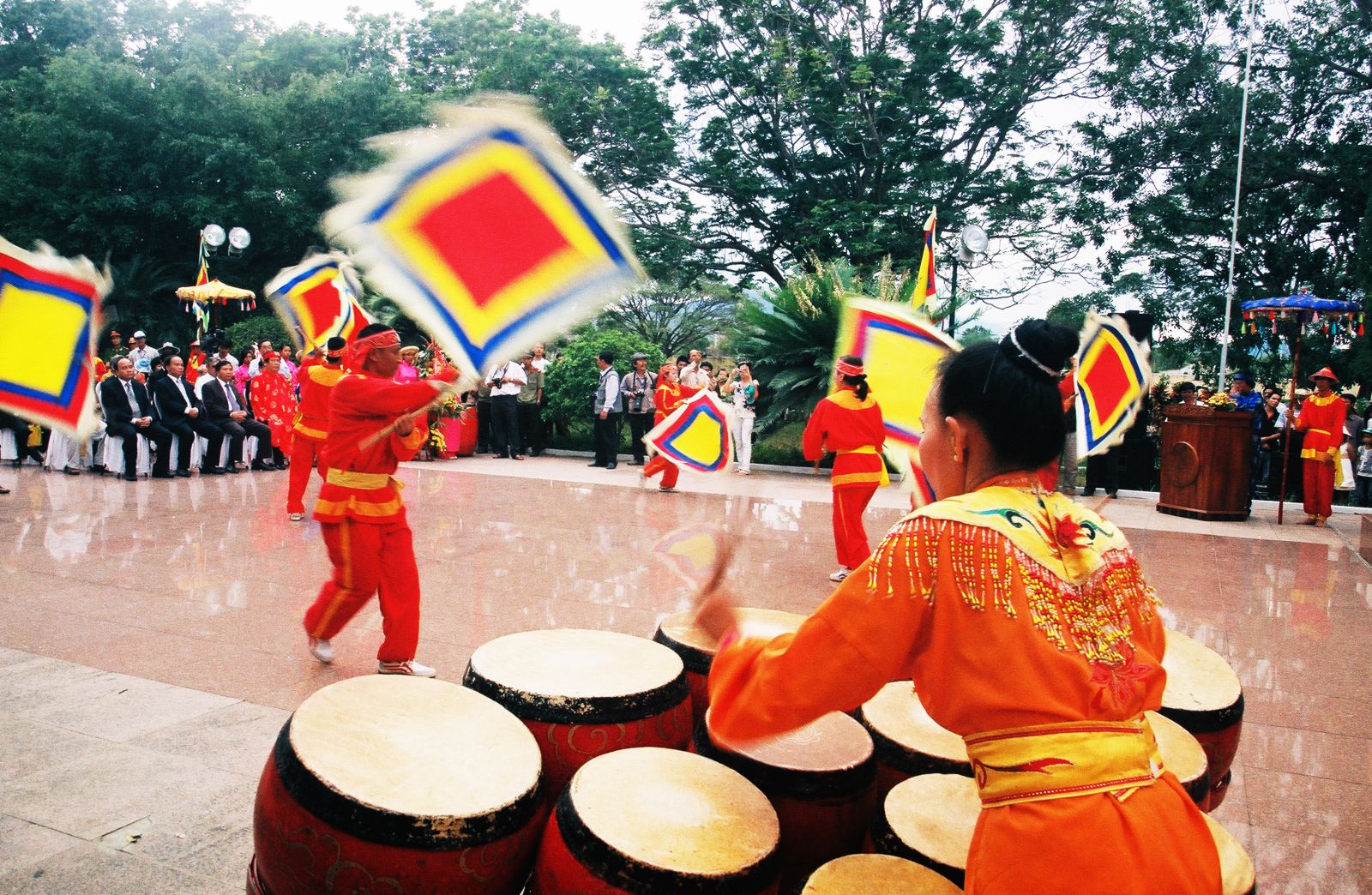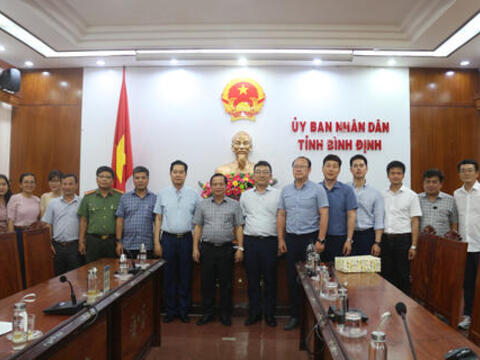Binh Dinh is a province in the South Central Coast of Vietnam, with a tropical monsoon climate. The average temperature is 27.4 °C (highest: 39.1 °C lowest: 15.5 °C); average humidity: 80%; annual average rainfall: 1,935mm (highest: 2,647.4mm, lowest: 1,339.7mm). Binh Dinh has a total natural area of 6,039.56 km2, a population of 1,500,000 , 686km from Ho Chi Minh City, 300km from Da Nang City, 300km from Bo Y International Border Gate (Kon Tum Province) through Laos. It is one of the five provinces of the central key economic region. Binh Dinh is located in the center of the North - South axis (on all 3 National Highway 1A, Trans-Vietnam Railway and Domestic Air routes), is the nearest and most convenient gateway to the sea of the Central Highlands and Southern Laos, Northeast Cambodia and Thailand (by Quy Nhon international seaport and National Highway 19). With Phu Cat airport, traveling between Binh Dinh and Ho Chi Minh City takes only 1 hour and Hanoi only takes 2 hours. In the near future, Nhon Hoi seaport in Nhon Hoi economic zone will be built to complete the transportation infrastructure system, giving Binh Dinh a remarkable advantage in regional and international exchanges.

Quy Nhon city is the Cultural - Economic - Political center of Binh Dinh province, identified by the Government as the southern central urban area of the central key economic region, along with Da Nang and Hue as the central cities center of commerce, services and international transactions of both the Central region and the Central Highlands.
Binh Dinh is preserving many architectural and cultural relics of the Cham people, especially Do Ban citadel and Cham towers (8 clusters, 14 towers) with unique architectural art. It is the starting place and the capital of the Tay Son peasant movement at the end of the 18th century with the famous name of the hero Quang Trung - Nguyen Hue. As the homeland and the place to nurture the talents of famous celebrities: Dao Tan, Han Mac Tu, Xuan Dieu, Che Lan Vien, Yen Lan...; Homeland of unique traditional art forms such as tuong, Bai Choi...

Binh Dinh has a coastline of over 130 km, many bays with beautiful beaches and harmonious and attractive sea landscapes such as: Tam Quan, Tan Thanh, Vinh Hoi, Trung Luong, Hai Giang, Yen Island, Thi Nai lagoons - Phuong Mai Peninsula, Ghenh Rang, Quy Hoa, Ham Ho, Nui Mot Lake, Nui Ba - Hon Vong Phu, Hoi Van hot spring, Tra O lagoon...
Traditional festivals: Dong Da festival, Go market festival, Phuong Danh forging village festival, Bang Chau bronze casting village festival, Nuoc Man urban festival, coastal residents festival, buffalo stabbing festival, The Festival of Dumplings,…

Cuisine: Pork belly cake, It's hemp leaf cake, Bau Da wine, Song Than vermicelli, Cho Huyen spring roll, coconut water rice paper, Quy Nhon fish noodle soup,... and many other famous sea specialties.
Gia Lai is a mountainous province located in the northern Central Highlands at an average altitude of 700 - 800m above sea level with an area of 15,536.92 km', an average population of 1,426,000 people (2017). Gia Lai borders Kon Tum province to the north, Dak Lak province to the south, Cambodia to the west, Quang Ngai, Binh Dinh and Phu Yen provinces to the east. The province has 17 administrative units including Pleiku city, 2 towns of An Khe, Ayun Pa and 14 districts including Chu Pah, Chu Prong, Dak Doa, Chu Se, Chu Puh, Phu Thien, Mang Yang, Krong Pa, Kong Chro, Kbang, La Pa, Ia Grai, Duc Co, Dak Po. Pleiku city is the economic, political, cultural and social center of the province.
Gia Lai is a province with rich and diverse tourism resources with many majestic natural landscapes, beautiful landscapes... a harmony of river systems interspersed with mountains, hills, lakes, rapids and waterfalls and primeval forests. Along with the unique indigenous culture of ethnic minorities, mainly Jrai, Bahnar, expressed through the architecture of communal houses, stilt houses, tombs, traditional festivals, costumes and musical instruments, etc.
In particular, "Central Highlands Gong Cultural Space" has been recognized by UNESCO as a representative intangible cultural heritage of humanity. In addition, Gia Lai has a long history expressed through historical and cultural relics such as the Tay Son Thuong Dao historical relic site, Stór resistance village, Dak Po memorial temple and victory monument, and the Roc Tung Early Stone Age relic complex in An Khe town.

 Tiếng Việt
Tiếng Việt  Print the article
Print the article






